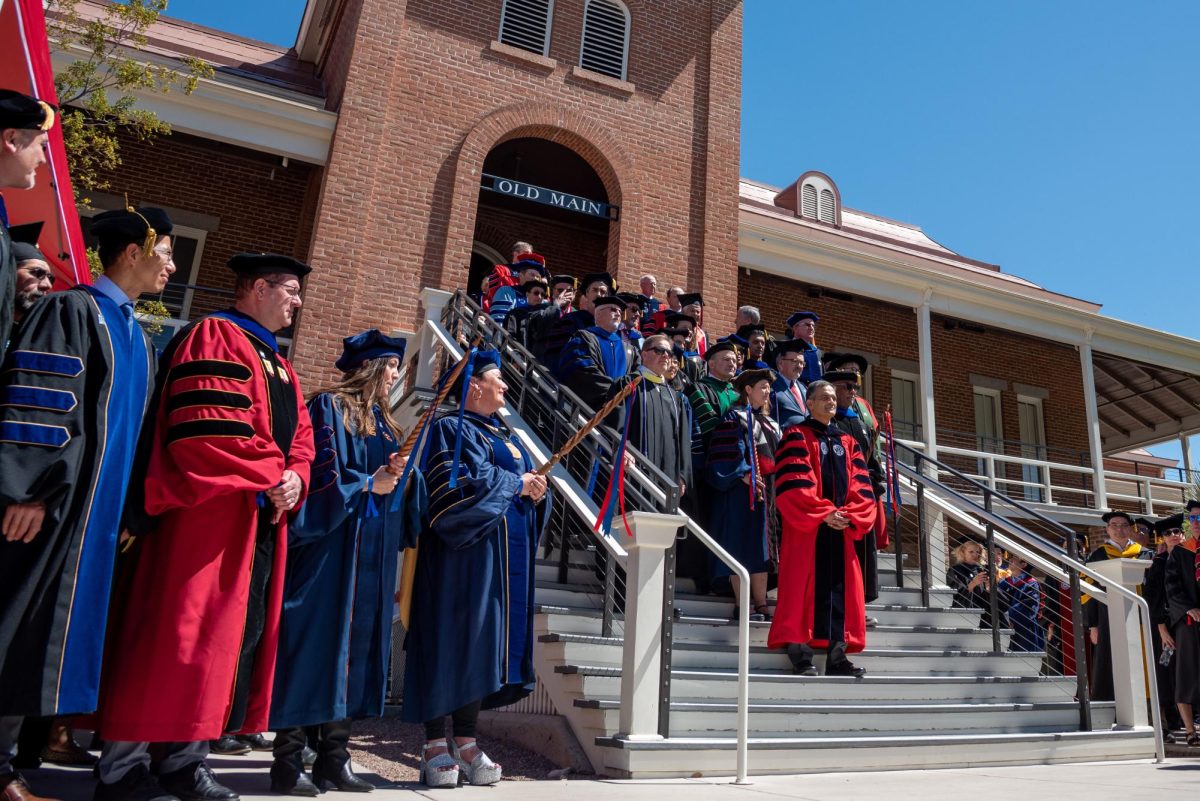University of Arizona Medical Center was among the first hospitals in the nation to be approved for conducting a brain scan that could help detect Alzheimer’s disease more accurately.
This is the first scan of its kind approved by the Food and Drug Administration, and is conducted by Dr. Phillip Kuo, an associate professor of radiology, and Dr. Geoffrey Ahern, a professor of neurology. The alternative to the scan would be a brain biopsy, which involves removing and analyzing pieces of brain tissue.
The new test has only been conducted on two patients since the hospital was approved to use the scan in April. In order to do the brain scanning, individual doctors had to be approved. Kuo was among the first.
“We are excited and eager to implement it,” he said.
The brain scan works by using positron emission tomography, or PET, to scan the brain using Amyvid, a radioactive dye that is injected into the patient in small amounts. The injection detects amyloid plaque in the brain, which is a sign of Alzheimer’s. The injection and scan are perfectly safe, Kuo said.
When patients undergo the scan, images of the brain will light up in the spaces the plaque is present. According to Ahern, early detection of Alzheimer’s is extremely important because there are early steps to help slow the plaque from spreading. The goal, Ahern said, is to catch people before they show serious symptoms of the disease.
The test can help make diagnostics clear, according to Kuo, which would be an advantage to start medications for a higher success rate in patients with Alzheimer’s.
Ahern also said that the scan is not necessarily a better method of determining if the patient has Alzheimer’s, but it is equivalent to genetic testing. However, Ahern is still grateful for the opportunity to use the test at UAMC.
“I would much rather have it than not have it,” he said. “It’s a very useful agent.”
Before a person can receive the scan, according to Kuo, a physician must evaluate the patient and recommend it. He also explained that this test works in adjunction to a whole clinical picture when addressing Alzheimer’s.
“It’s a good test, but it’s like all tests,” Kuo said. “It’s not perfect.”
The test could be used to determine whether patients will get Alzheimer’s 10 to 20 years before symptoms show, Ahern said. Alzheimer’s can typically be traced through family history so those concerned about the risk may find a brain scan helpful.
According to Ahern, mild forgetfulness is normal for people over the age of 50. But once short-term memory loss begins, or other serious symptoms, people may be at risk for the disease. And while mild cognitive impairment is normal for dementia, it can also be a prelude to Alzheimer’s, both doctors said.
Ahern also stressed that other syndromes can have amyloid plaque, so the test can be helpful in determining other diseases.
Both doctors stressed, however, that there is no known cure for Alzheimer’s disease at this time.
“The test is useful in helping patients faster with their problems,” Kuo said.







